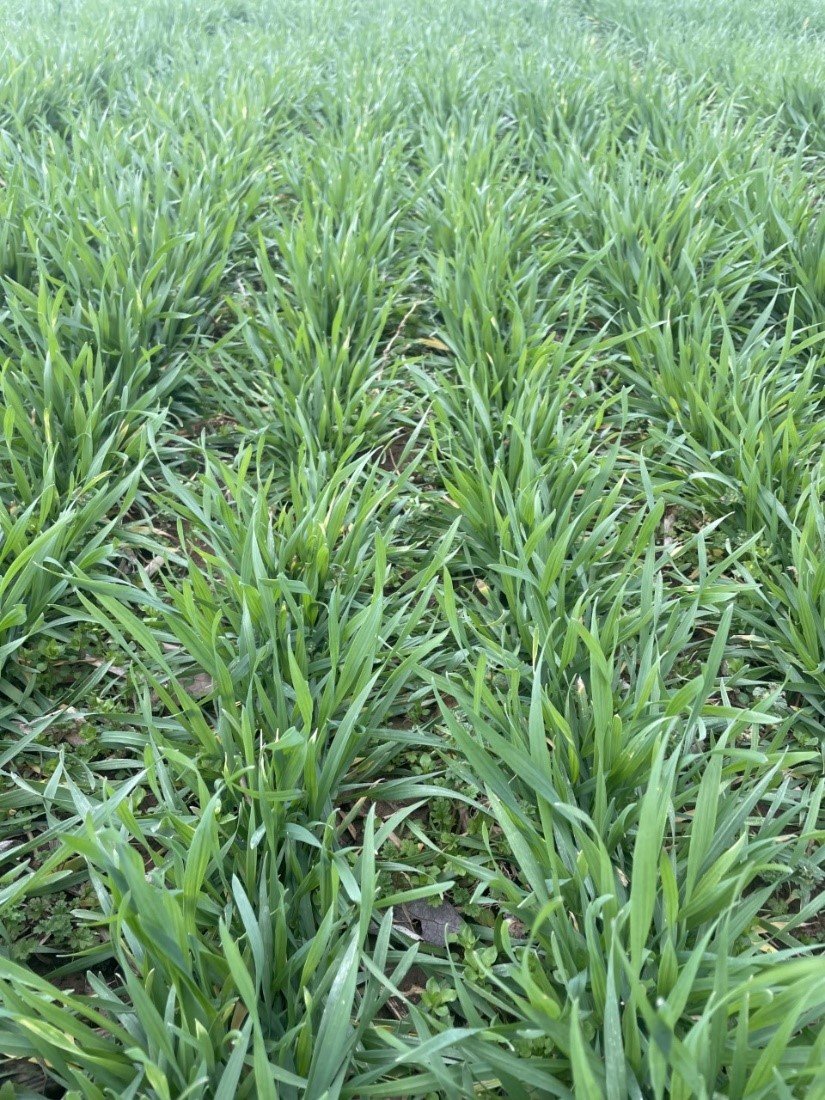The October 16, 2024, edition of Southern Ag Today indicated a slightly bullish wheat situation within the United States (Welch, 2024). Today’s article discusses this further using three charts: U.S. Wheat Imports by Country, Wheat Production by Country, and Ending Stocks by Country.
Read MoreA recent correspondence with Phillip Anderson, crop consultant from Daviess County, reported a significant outbreak of fall armyworms (FAW, Spodoptera frugiperda, Noctuidae) in cover crop wheat and rye; and also in pastures located in reclaimed land from coal mines.
Read MoreSeveral wheat fields in Kentucky are now at the anthesis stage (Feekes 10.51, “flowering”) or fast approaching it. Anthesis is a critical time, as wheat becomes susceptible to infection by Fusarium graminearum, the primary causal agent of Fusarium head blight
Read MoreThe early morning low temperatures on Apr 22 were quite frosty. In some areas, the low temperatures were in the range that could potentially cause damage to the wheat crop.
Read MoreAcross Kentucky almost all of the wheat crop has jointed (Feekes 6) and much of it has developed at least two nodes (Feekes 7). When temperatures dropped into the teens and low 20’s (°F) overnight March 19 (Table 1), we once again find ourselves asking the question: Will the low temperatures a couple of nights ago damage this year’s wheat crop?
Read MoreBroken grain and trash/foreign material tend to accumulate in the center of grain bins during filling. Air will not pass through this area very well, so the best management practice is to remove this material from the bin (often referred to as ‘corning’) and either store it separately or feed or sell it quickly to avoid potential problems during storage.
Read MoreConventional storage bins and silos will be filled soon, and alternative structures will likely be needed to handle the extra bushels as harvest continues and producers wait for improved prices in early 2024.
Read MoreWe have a new highest overall yield reported in the contest at 143.42 bushels per acre. This 2023 No-Till State Champion wheat entry from Jason Crisp in McLean County followed soybeans. Camron, Clay and Mark Wells in Union County reported the second highest overall yield ever at 139.64 bushels per acre with the 2023 Tillage State Champion.
Read MoreRead the latest research report on managing Fusarium head blight (head scab) in wheat from the University of Kentucky. This research was conducted by Nathaniel White, Timothy Stombaugh, and Carl Bradley with funding from the Kentucky Small Grain Promotion Council. It was published in the Plant Health Progress research journal.
Read MoreKentucky is known nationally for consistently growing a wheat/double-crop soybean rotation. This rotation has been a part of Kentucky agriculture for many years because of all its benefits.
Read MoreOn March 15 and again from March 17 to 21, temperatures plummeted across the state. Minimum air temperatures dropped into the teens and low 20°F across the entire state overnight from March 19 to 20.
Read MoreAs the ‘meteorological’ winter ends (Dec 1 to Feb 28) for 2023, we are projected to have the warmest winter on record. This is impressive considering the sub-zero temperatures in late December 2022.
Read MoreFollowing sub-freezing and especially sub-zero temperatures wheat growers throughout the state usually ask “did the snow (and or ice) hurt the wheat?”
Read MoreUnder “normal” conditions, most Kentucky wheat producers have already begun to plant. However, much of Kentucky is classified as abnormally dry with far western Kentucky in a moderate to severe drought which can make planting difficult (Figure 1). Fortunately, wheat producers have a few options.
Read MoreThe 2022 Kentucky Wheat Yield Contest Winners have been identified. S & J Emmick of Hancock County harvested 132.68 bushels per acre. Camron Clay and Mark Wells from Union County are State Champions for the Tillage division at 121.91 bushels per acre.
Read MoreAs September ends and October begins, wheat planting will begin across Kentucky. Producers have already made several agronomic decisions such as variety selection, tillage practices and herbicide selection, it is always beneficial to go back and look at the fundamentals of planting.
Read MoreTo achieve the best management of FHB, the most important step is to choose varieties that have resistance to this disease. Unfortunately, varieties with complete resistance (immunity) to FHB do not exist, but there are several varieties available with high levels of resistance.
Read MoreFor those farmers who have been dealing with ryegrass and have known problematic fields, it may be pertinent to start planning for ryegrass control with a fall residual herbicide application.
Read More

















